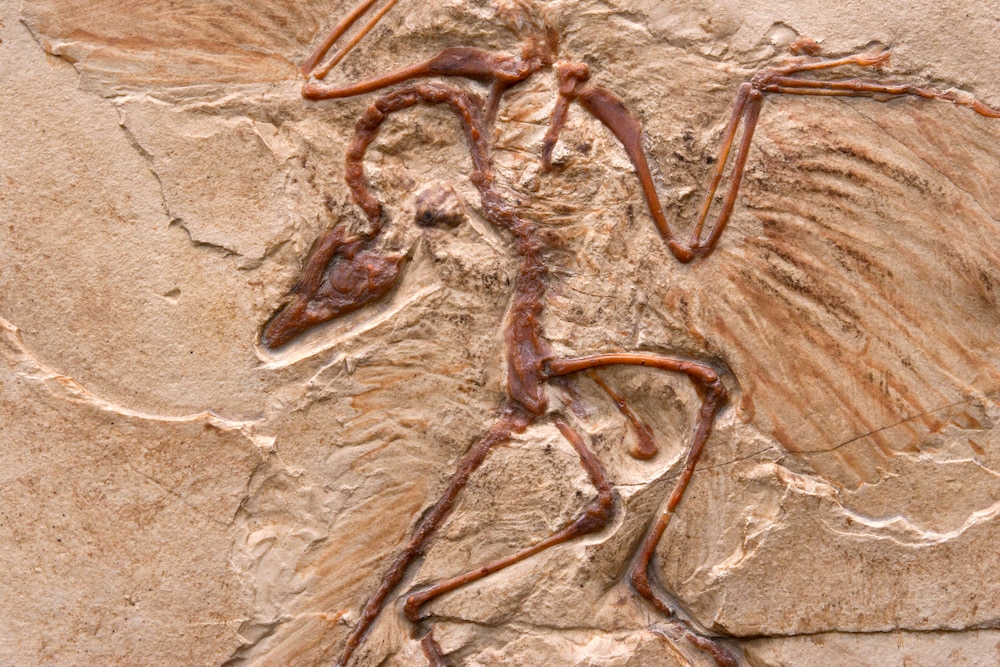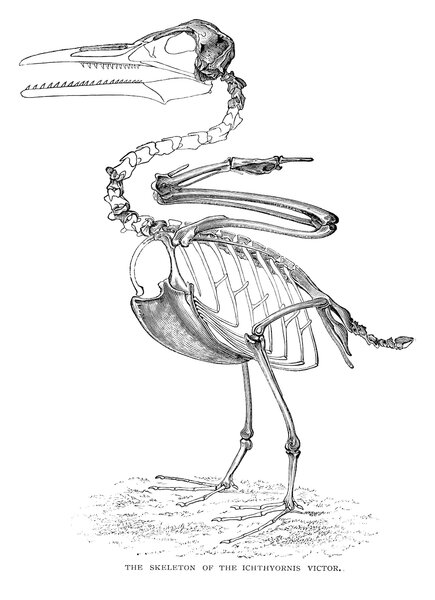Create a free profile to get unlimited access to exclusive videos, sweepstakes, and more!
How did so many birds manage to wing it while dinosaurs went extinct?
Many birds out-survived dinosaurs because brains...they could adapt after the comet catastrophe.

Some birds managed to fly from the threat of extinction once the Chixculub asteroid gobsmacked Earth 66 million years ago, but which ones made it?
Ichthyornis was a bird that once flew with the dinosaurs. Now extinct, it had a beak full of tiny sharp teeth and a brain that is almost unrecognizable next to extant birds. The answer to why this species perished but so many others survived could be in their forebrains. During a cataclysmic time of drastic and constant change in the environment, larger forebrains could modify behavior to keep up with volcanic eruptions one moment and a nuclear winter the next.
Performing the closest thing to an autopsy on the 70-million-year-old skull of Ichthyornis revealed that its brain was more primitive than those of birds which are still around. Evolutionary neuroanatomist Chris Torres and his research team, who recently published a study in Science Advances, is trying to demystify why the forebrain has so much plasticity, and whether changes in it can drive changes in skull morphology — or vice versa.
“The ancestors of living birds had a much larger forebrain relative to dinosaurs and other, non-avian birds,” he told SYFY WIRE. “We suspect that those expanded forebrains likely correspond to increased complexity and capacity of some function or functions associated with the forebrain.”
Torres thinks that prehistoric birds with larger forebrains that were the predecessors of extant birds adapted faster as catastrophe after catastrophe hit. However, much is still unknown about how changes in certain brain functions are related to the shapes of their brains. His hypothesis argues that the forebrain can be triggered to change shape by different outside influences, including the need to evolve adaptations for survival in an environment that has been completely and irreversibly altered. This must have happened in the asteroid aftermath.
However, brain evolution in birds is much more complicated than just adaptations being pushed by the forebrain. The changes in shape that are associated with specific functional changes have been notoriously difficult to figure out. It is possible that the physical need for the rest of the skull, including the beak, to change shape (depending on needs such as feeding or nesting) can also have an effect on the shape of the actual brain with no effect on brain function. Few skulls of ancient birds that weren’t crushed beyond recognition have been found yet to prove this.
Because birds have delicate bones, with the skull being no exception, the research team didn’t want to risk damaging what could potentially give them a breakthrough. An advantage of bird skulls is how tightly they wrap around the brain, which makes it easier to create a cast. They used CT scanning to create a digital cast and then fill in the empty spaces that correspond to different brain sections. The skull was then removed from the screen to reveal what the brain of Ichthyornis, a bird that has been extinct for millions and millions of years, probably looked like.
“The bones we were most excited about were the ones that immediately surrounded the brain — the neurocranium,” Torres said. “The neurocranium is usually crushed in most early bird skulls, but this one preserved enough internal detail for us to reconstruct a useful endocast.”
Even though that endocast was partial because a large part of the skull had been damaged, it was still possible to compare it to the endocasts of both dinosaur and extant bird skulls. Something that surprised Torres was that Ichthyornis, despite having a more primitive brain closer to that of Archaeopteryx (above) than extant birds, did have a wulst, a complex brain structure that contributes to various sensory processes within the brain of a bird. It is thought to have something to do with vision and flight, though how it factors in remains a mystery.
“Other brain regions have a role in those functions, and the wulst is also involved in functions unrelated to either of them,” he said. “The evolutionary origins of the wulst remain unclear until we can understand precisely what it does and when it first arose in birds.”



























